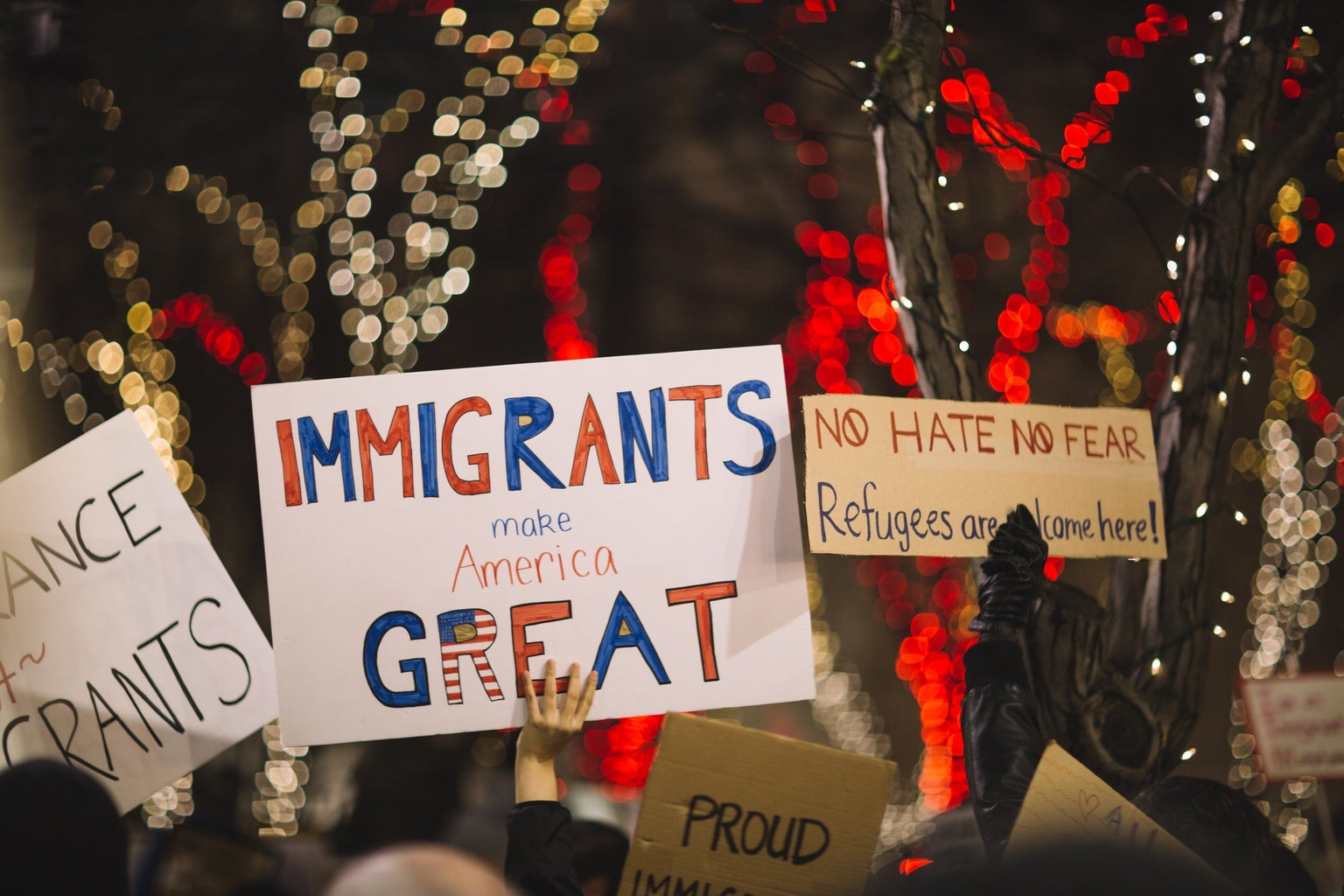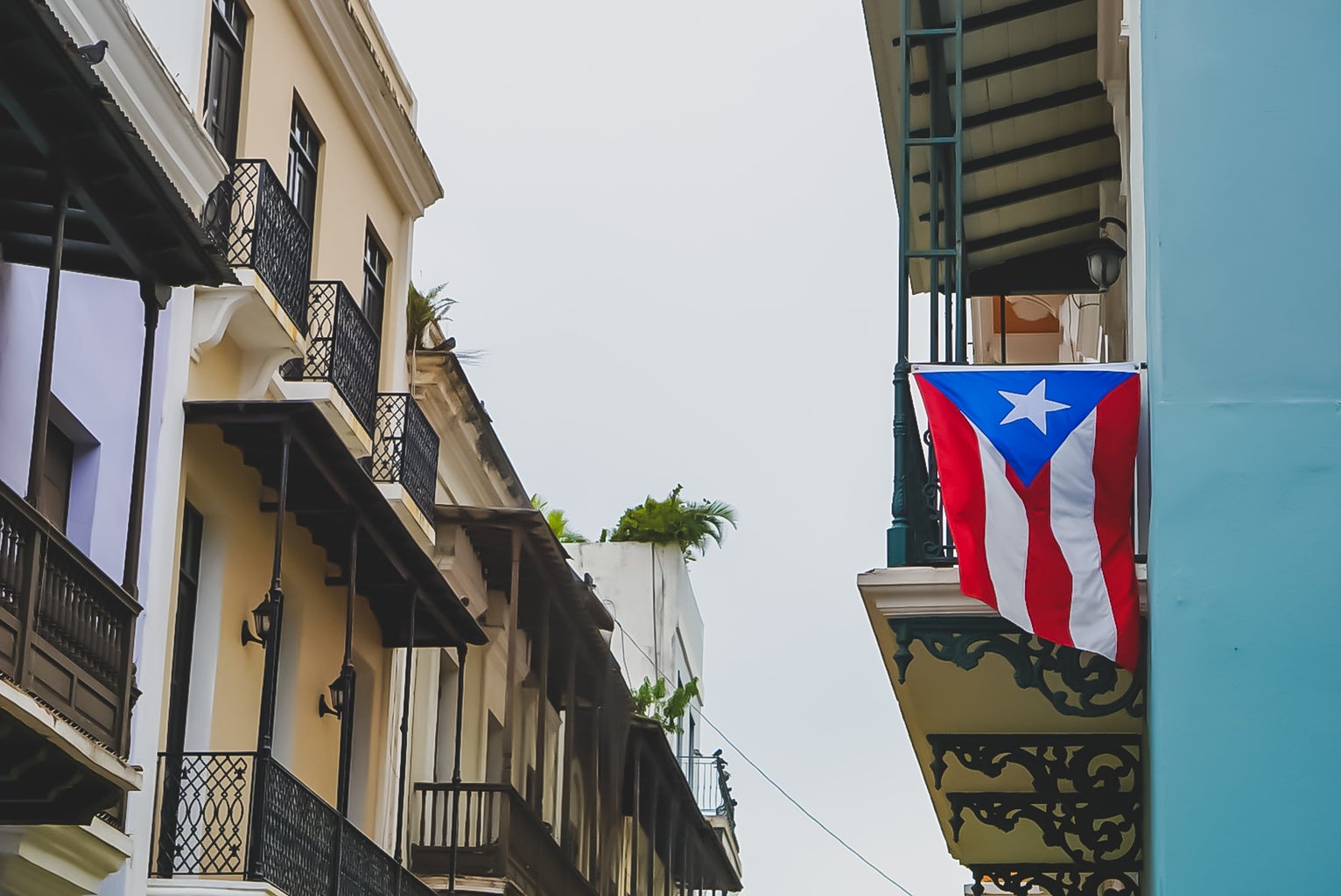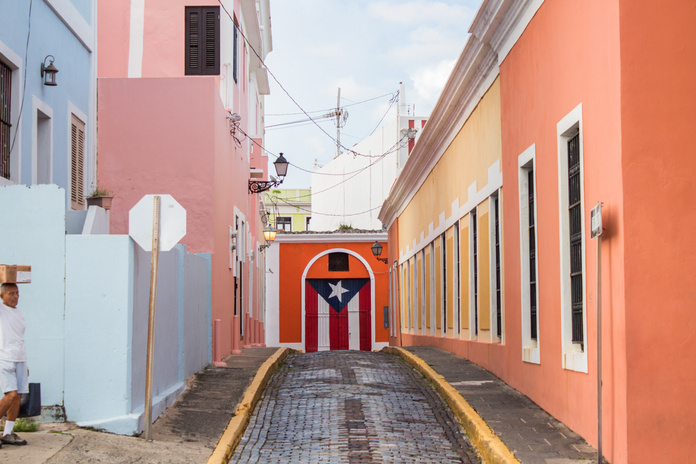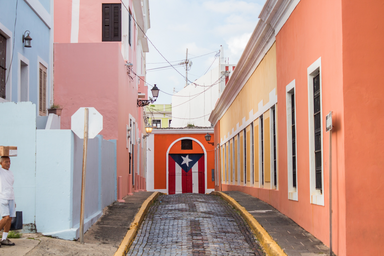Walking by two neighborhoods in San Juan, Puerto Rico, the streets of Capetillo at Río Piedras, or through the sidewalks of Barrio Obrero in Santurce, you’re automatically greeted by a mix of similar but independently unique cultures. What do mangú, habichuelas con dulce or tostones con salami sound like? Whether you tried to Google it or not, those are foods from the Dominican Republic that have been incorporated into Puerto Rican culture.
The land and the people
The Dominican Republic is an island in the Caribbean that shares its land –named La Española by the European colonizers– with Haití. Data from 2018 from The World Bank confirms there’s a population of more than 10 million people in the Dominican Republic. Baseball, gastronomy, beautiful beaches, fields that make you feel at home, beauty queens, and a large musical offering are some of the most attractive characteristics of this country. Of course, like many of the islands and countries of America, it maintains a strong European architecture, has gone through many battles to ensure its independence, and has had dictators that have made the inhabitants suffer like the horrible fascist Rafael Trujillo.
But, how did Dominicans end up related to Puerto Rico?
Back in 1910, Puerto Rico started receiving black, immigrant working people that formed neighborhoods. These people constructed Puerto Rico. In the 1970s, a big flood of Dominicans arrived at the Island, mostly moving to San Juan, looking for jobs and trying to get near to the United States.
Yeismaríe Martínez Pérez, a 22 year old Puerto Rican student, was raised in the Dominican culture thanks to her Dominican family. She’s graduating from a Foreign Languages major and wants to move to Europe. Like many other people do, Yeismaríe’s parents moved to Puerto Rico more than two decades ago. “Well, my parents came to Puerto Rico looking for a better future, to get out of town and grow,” expressed the young woman while remembering all the summers spent throughout her childhood and teenage years at Cedro de Miches, to the east of the Dominican Republic, where her family comes from.
Not so different is the case of Ricardo Ramos Veras, 20 years old right now. He was born in Puerto Rico, but moved to the Dominican Republic as a baby, so he was raised at Moca, in the Espaillat province, in the El Cibao region. He grew up with the Spanish accent that characterizes Dominicans, but in 2016, he came back to Puerto Rico to practice his passion: baseball. In Puerto Rico, he found new opportunities to play and develop in the sport.
Like Yeismaríe’s family and Ricardo, many Dominicans come to Puerto Rico to fulfill their dreams. Throughout the years, the number of Dominicans who migrate to the Island has decreased, but there’s still a population of 225 to 250 thousand Dominicans, as the consul of the Dominican Republic in Puerto Rico, Franklin Grullón, expressed. This group produces a large portion of the local economy. So technically, Dominicans came here to work, but clearly they’ve contributed more than that.

How does the community contribute?
Francis Daniel Nina-Estrella, professor and investigator at the University of Puerto Rico at Humacao, has been working with Dominican communities, specifically at Barrio Obrero, and has identified something that these people have that allows them to survive any crisis: resilience. He mentioned that, in events such as hurricanes Irma and María in 2017, Dominican businesses were the ones who kept up the economic production of the Island: “What I can tell you is that the Barrio Obrero that I researched on, there’s a very strong combative business spirit.” Additionally through the corruption that pervades Puerto Rico, the economic gap in the community, earthquakes, and now the pandemic, Dominican communities have demonstrated their determination to continue their work.
You can find dozens of small Dominican-owned businesses throughout San Juan, from beauty parlors and cafeterias, to lifestyle products and medicine kiosks. Borinquen Avenue at Barrio Obrero and Paseo de Diego at Río Piedras are some of the most commonly visited areas. After Hurricane María, these Dominican businesses were the ones who kept the economy flowing in a time of Island-wide crisis. Not only are these businesses their only source of income, but they are passionate about them and are determined to keep working.
The term “business resilience,” coined by Nina-Estrella, summarizes the status of Dominicans in Puerto Rico in terms of accessibility to work. No matter the adversities they face, they are always willing to work through them. “[Dominicans] are very hard workers and many times they do tasks here that other people (Puerto Ricans) don’t want to do, and for them, work is still work and they’re grateful to have it,” commented Martínez Pérez.
However, Dominicans also contribute in areas outside of business ownership. You’ll find high percentages of Dominicans in Puerto Rican industries such as transportation, construction, health, law, and politics. “We found that […] more than 55, almost 60% of the [Dominican] community participated directly in the production activity compared to the general population of Puerto Rico, which is a 45%,” said the consul. Because Dominicans do not have the government aid relief that Puerto Rican workers have, the Dominican community deserves appreciation for the hard work they do for a country that isn’t theirs.
This pattern has a name: residual employment. This kind of ‘employment’ implies the participation of an immigrant community, which is more active in the working class of a country, while the local community of the country moves forward to other places in search of better opportunities. Sound familiar? Exactly. Thousands of Puerto Ricans, and many others from different countries in Latin America, migrate to the United States every year to make a living there, helping the economy prosper, even if some political figures deny the occurrence of this phenomenon.

What people ignore: the other side of diversity
Behind the glorious success and the beautiful mix of these cultures, there’s a cruel reality that Dominicans are living in Puerto Rico. Dominicans face a multitude of discrimination and racism in Puerto Rico, representative of a discrminatory behavioral pattern that Puerto Ricans themselves live too, but some locals reproduce it against the Dominican community as well. According to Grullón, 60 thousand Dominicans live on the Island with an illegal migration status, and they do not have access to any type of benefits. On top of the problems that come with that, it’s extremely difficult for these communities to be accepted in Puerto Rican society; but just because you obtain your residency, doesn’t mean you’ll be free of discrimination.
“I said that it was impossible to get used to it,” expressed Ricardo when he described when he came back to Puerto Rico after growing up in the Dominican Republic. “Some people […] tried to treat me wrong, they called me obscene words, but in reality, I did not pay attention to those things. I always try to keep my focus and a peaceful mind.” This hasn’t just happened to Ricardo― ignorant, and often racist, misconceptions about Dominicans are common in Puerto Rico. Decades ago, Dominicans began migrating to Puerto Rico on yolas, or sailing boats, which became a common motif in bullying this community about their lower social class. Additionally, since many Dominicans are black, they have suffered the many discriminatory racial implications of this, even at the hands of the police, something the consul mentioned as a common problem when he started researching Dominican communities.
Even so, this is not the case of every single Dominican immigrant. Stephany Eunice Gómez Valdez, a young Dominican girl that has lived in Puerto Rico for 10 years, said that where she lives, she and other Dominican women she knows receive the same treatment as Puerto Rican women; and since the increase in waves of Dominican immigration to the Island, the consul said that there have been several executive orders approved to allow Dominicans to receive an education and be attended in hospitals. The truth is that, although there are not enough statistics on the subject and every case is different, it’s necessary to be conscious about the internalized racism that exists in Puerto Rico against the Dominican community in order to work towards overcoming it.

What we should expect
It’s already clear that, whether they are quisqueyanos or cibaeños, Dominicans have brought more to the Island than we give them credit for, and some have even been living here for longer than we have been alive. Let’s be empathic!
“I consider myself 100% Dominican until I die,” said Gómez Valdez, who grew up in the Sabana Perdida neighborhood in Santo Domingo, the capital of the Dominican Republic. “I’m really grateful to Puerto Rico. I love living here. I don’t imagine myself living in the Dominican Republic again because I got really used to the lifestyle here [Puerto Rico], but I consider myself as Dominican and I’m still really grateful to Puerto Rico.”
On the academic side, both Grullón and Nina-Estrella said we lack studies on how much this community has contributed to the Island. The consul said they need to create a more precise study on the amount of Dominican professionals, and the income they contribute, to Puerto Rico. Nina-Estrella added that, “[They] need to keep researching business resilience because there’s documentation but it is not uniform to the whole country.” He wants to investigate how Dominican communities manifest and what they respond to. “Small and middle business owners, post crisis in Puerto Rico, […] are the ones who have sustained the country,” he concluded.
With the current COVID-19 pandemic, it will become necessary to evaluate how the Dominican community will endure it, while taking into consideration the way the government and other institutions manage the crisis of the poorest.
If you’re able to travel after this pandemic, I invite you to visit the Dominican Republic. Even though I’m half Dominican, I’ve never been there; but every Dominican says it that if you go to the Dominican Republic, you won’t want to leave it. I also invite you to visit the Dominican neighborhoods in Puerto Rico! It’s a culturally rich experience that you won’t regret.


